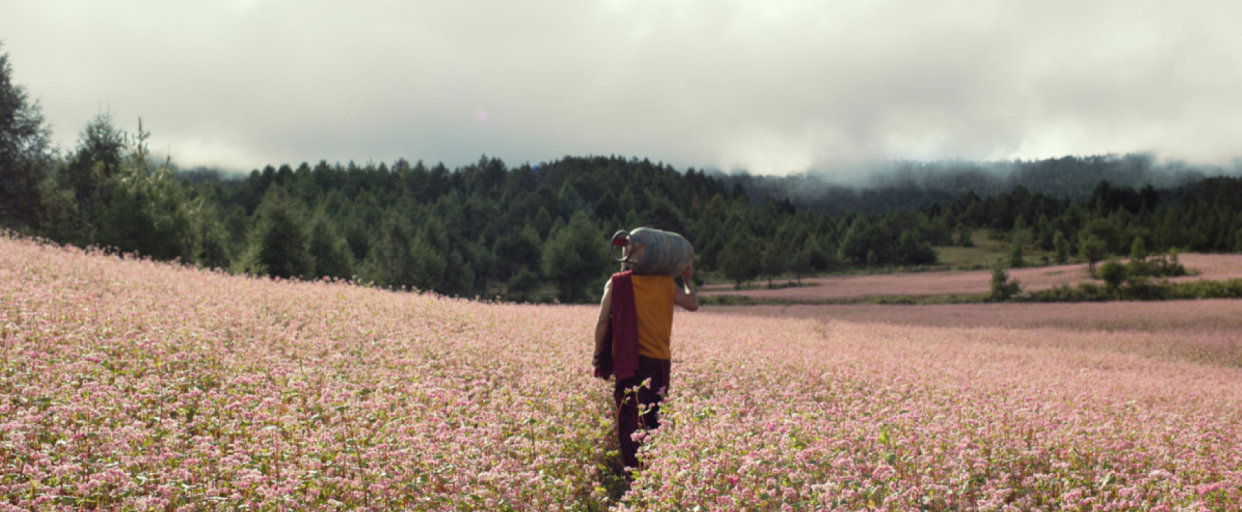‘The Monk and the Gun’ Review: Bhutanese Villagers Welcome Democracy (and Daniel Craig) with Caution

Editor’s note: This review was originally published at the 2023 Telluride Film Festival. Roadside Attractions releases the film in theaters on Friday, February 9.
It’s often said that the most important election for a young democracy is the second one. A nation seeking a new form of government can easily get swept up in the excitement of choosing its own leader, but the real test of its commitment comes when the first winner has to cede their power. Similarly, the first James Bond movie with a new actor in the role will always be a major cultural event — but nobody knows if he’ll be remembered as a Connery or a Lazenby until his second film hits theaters. So it’s fitting that Pawo Choyning Dorji’s “The Monk and the Gun” begins in 2008 at the intersection of the first democratic elections in Bhutan and the release of Daniel Craig’s sophomore Bond outing, “Quantum of Solace.”
More from IndieWire
As the South Asian nation prepares to abandon its traditional monarchy, democracy activists traverse its most remote villages to teach its largely uneducated citizens how to vote. Choosing between candidates and policy issues is a secondary concern — they’re more focused on teaching the subsistence farmers how to fill out a ballot and place it in a box. Even that part is a struggle when dealing with a highly religious populace that often reflexively resists change. But democracy isn’t the only Western invention making its way to Bhutan — television and soda are arriving too. And it’s tough to fight for the attention of a village when you’re competing with James Bond on TV.
When American arms dealer Ronald Colman (Harry Einhorn) arrives in Bhutan to track down a rare Civil War rifle, it’s immediately clear that he’s visiting a nation in transition. But he’s not prepared for the news that the previous owner gave his coveted firearm away to a local monk. Ronald’s lucrative offers to purchase the rifle are repeatedly rejected, and he’s finally told that the monk will only part with it if he can secure two of the same AK-47s used in “Quantum of Solace.” Nobody will explain why the monk needs guns — or why he’s so interested in James Bond — but they insist that the offer expires after the following night’s full moon.
“The Monk and the Gun” takes place in a nation with virtually no exposure to American iconography, a fact that is essential to properly understanding the film. The story often appears to take strange detours, in part because its characters are approaching concepts without the centuries of history that accompany them in our minds. It’s easy to think of guns as tools for mass shootings and democracy as an unambiguous good — because we’ve been conditioned to. But none of the Bhutanese villagers have ever taken an American social studies class, so they’re left to form their own conclusions from scratch. For example, nobody ever questions the monk for brandishing assault rifles because the trust in Vajrayana Buddhism is so strong that everyone assumes he has a peaceful reason for needing it. At the same time, democracy is largely viewed as a needless way of injecting individualism into a nation that was running smoothly, not an empowering tool to increase government accountability. The cultural and generational disagreements form a nuanced tapestry of a nation at an inflection point, with the mystery of the monk’s desire for guns at the center of it.
“Tradition” has become a dirty word in American politics, often for the understandable reason that bad actors have tried to turn it into a dogwhistle for ethnic nationalism. But “The Monk and the Gun” is a film that understands why we still need to consider tradition — the actual definition of the word, that is — when thinking about complex political issues. For a changing society to obtain any kind of buy-in from its citizenry, you have to convince people that they’re building something that can be passed down to their children. If you try and tear down every single thing that their dead parents and grandparents would have recognized, it’s hard to blame anyone for resisting out of fear that you’ll do the same thing to their own legacy someday.
None of which is to say that “The Monk and the Gun” is an anti-democracy film. Much like Dorji’s breakout feature “Lunana: The Yak in the Classroom,” it documents the ongoing modernization of Bhutan with a mix of genuine optimism and healthy skepticism. The good intentions of the election organizers are apparent, but the filmmaker seems to have internalized a lesson that the world has spent much of the 21st century learning — democracy can’t be imposed on a nation from the top down if the people don’t want it yet. Dorji’s gaze sees his evolving nation the way a parent might look at a young child: capable of anything in the long run, as long as the right steps are taken in the short term.
Grade: B
“The Monk and the Gun” premiered at the 2023 Telluride Film Festival.
Best of IndieWire
Sign up for Indiewire's Newsletter. For the latest news, follow us on Facebook, Twitter, and Instagram.

